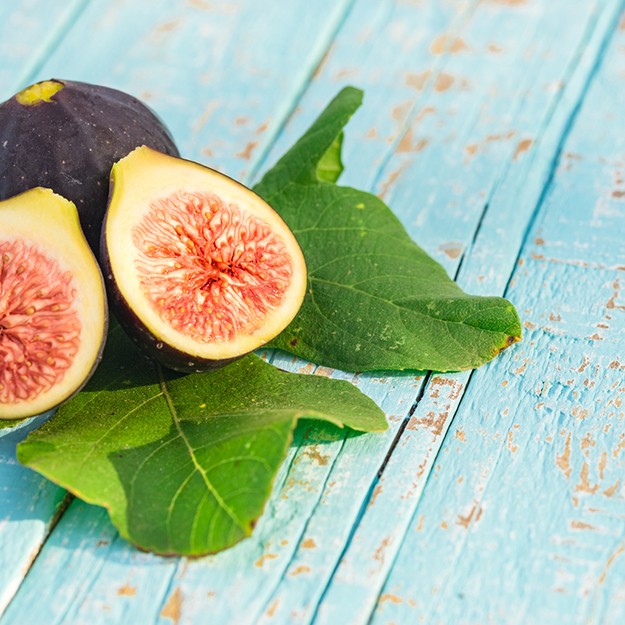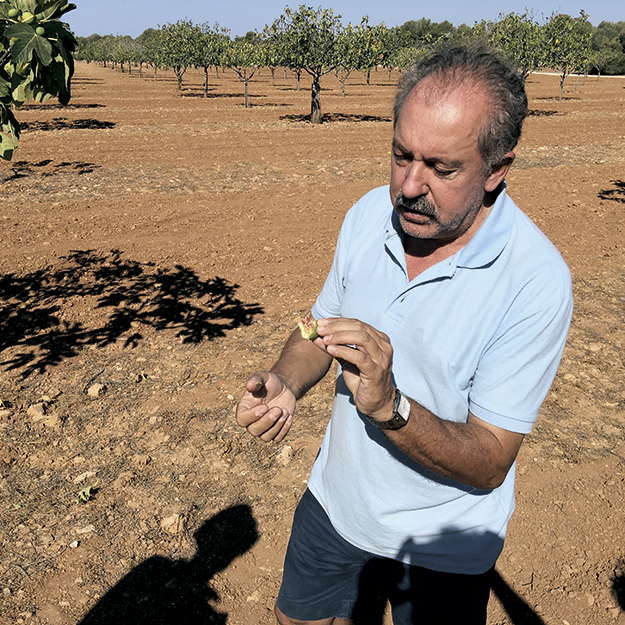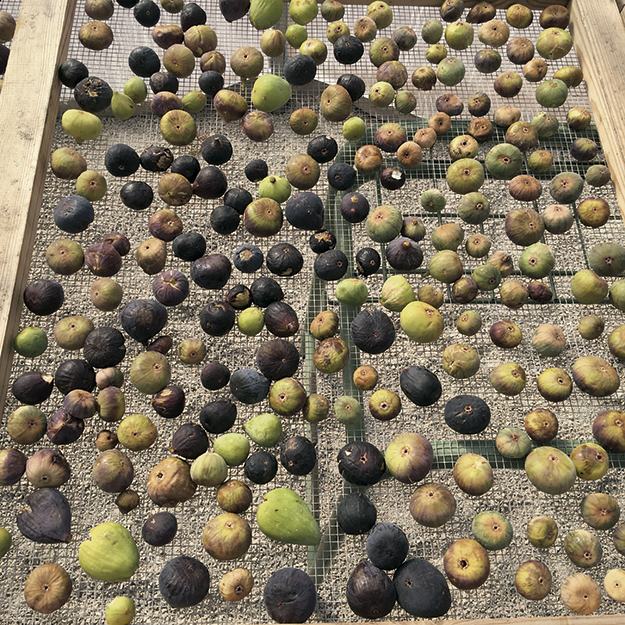.png.transform/rendition-xs/image_image%20(1).png)
Apotheosis of the Fig Tree in Mallorca
Much more important to Montserrat Pons than harvesting two tons of figs is to recover a variety on the point of extinction. His experimental site in Mallorca is home to the most comprehensive private collection of fig trees in the world.

Text: Andoni Sarriegui/©Gourmets Magazine
To give you an idea of our interviewee's dedication, whenever his wife suggests a possible vacation destination, Montserrat Pons i Boscana always answers with the same question: “Are there fig trees there?”. He doesn't really care about anything else. In Son Mut Nou, his experimental site in Llucmajor (Mallorca), he has gathered 1,384 varieties of fig tree from over 30 countries: a total of 3,000 specimens of this tree, regarded with veneration in ancient Greece, and whose fruit (in fact an inflorescence) is a symbol of wisdom.
The owner of Loewe wanted to buy the estate from him, and some Japanese buyers were interested in his entire production, but some things on the island are fortunately not for sale. The passion for fig trees in this case. Montserrat Pons has collaborated with Slow Food in campaigns to recover native varieties, and published several essays on local medicinal flora and on the fig tree, including his magnum treatise entitled "Les figueres a les Illes Balears". He is a world authority on this subject, and is soon due to give lectures in several Asian countries on a flight of fancy that became a passion: "figology".
Where and when did your passion for fig trees arise?
Long time ago... I studied pharmacy at the university in Barcelona and my favorite subject was always botany. In fact, I've published studies on the medicinal flora of the Marina de Llucmajor. In addition to that, my grandparents were countryfolk and they passed on some of their knowledge to me when I was a boy. I was also influenced by a family friend, Josep Sacarès, a passionate self-taught man who inspired me with his enthusiasm for figs. The first plantation of figs in Son Mut Nou dates from 1995.
How many figs are there in Son Mut Nou and how many varieties have you managed to collect?

On the estate there are 3,000 specimens from 1,384 different varieties, a substantial number, as there are 2,200 in the whole world. They come from over 30 countries, including Japan, South Africa, Cuba, Libya, Egypt, United States, Syria, China, Afghanistan...
How many native varieties have been described and how many are there on the estate?
The agronomist Pere Estelrich described 41 varieties in 1901, but thanks to our field work, this figure has been extended to 249 cultivated varieties. All of them are present in Son Mut Nou, which is neither an orchard or a fig orchard, but a germplasm bank: a place intended for genetic conservation, where the tree is more important than the crop. We have sometimes recovered a variety after having located the very last remaining specimen. This way we conserve our agri-food heritage and honor the experiences of our forebears.
I imagine there must be varieties at serious risk of genetic erosion.
That's right; unfortunately, almost 30% of the native biodiversity is seriously threatened with extinction.
What are your favorite specimens?
It's difficult to say, because for me each fig tree is like a daughter. If we're talking about local varieties, there are two in this municipality, Llucmajor, which are very special for their quality and their high risk of erosion: the “Cosme Manyo” and the “Tia Penya”. I'm also extremely fond of the Virgin Mary's fig tree, which comes from cutting from the Matareya region (Egypt). This tree is venerated by Christians, as it sheltered and nourished the Holy Family during their exodus. Another fig tree I really love is the one originating in Olympia (Greece), where they held the first Olympic Games in 776 BC.
When does the harvest begin and end?
Although the maximum crop always occurs in August and September, the wide variety of fig trees I grow in Son Mut Nou means I can be eating figs for as many as nine months a year: from May to early January. Figs at Christmas! It's incredible, isn't it?
And what do you do every year with that colossal fig crop?
Unfortunately a large part of the crop is lost, as only two of us run the whole estate and to be quite honest, we can't keep up. Now we have a project consisting of the personal sponsorship of fig trees.
What kind of research are you doing with the University of the Balearic Islands?
We're creating a food film produced by vaporization that allows fresh figs to be exported, as they can be conserved for 15 days. And with the Department of Agriculture we're conducting a survey of the fungi that attack wood that has been weakened as a result of drought.
But you also produce fig derivatives, don't you?

Yes, we make many products from either dried or fresh figs: everything from wine, beer and brandy (marinated with fig leaves for six months) through to figs with olive oil or baked in the oven, and including jams, fig bread (dried fig paste with spices and almonds) and even fig vinegar.
Can you give us an exclusive preview?
Yes, two unique products in the world: tea made from dried fig leaves, currently in the experimental phase, and a sparkling fig wine, which is turning out to be too costly. We are also putting the finishing touches to a fig coffee based on a recipe that used to be made in Austria over 100 years ago with figs from Turkey and Algeria. This formula was collected in 1899 by Toni d’es Forn, a scholar from Llucmajor who founded the agricultural journal “Es pagès mallorquí”.
How far has the fig tree been essential for the survival of the Mallorcan population?
It's been crucial. In fact, until recently, before the arrival of tourism, Mallorca had a subsistence economy and was totally dependent on the countryside, and on the yearly crops. In the mid-19th century, the fig was the most cultivated tree on the island, ahead of almonds and carobs. And together with broad beans, bread and vegetables, figs were one of the staples of our daily nourishment. In the words of the aforementioned Toni d’es Forn, figs were the dessert of the rich and the bread of the poor.
How would you describe the taste of a fig?
It's incredibly flavorful, with a sweet and very sugary first taste, and a tart but elegant aftertaste. In any case, when we talk about flavor we always need to distinguish between early, late and winter fruit. And in Majorca we've always differentiated three categories: figs for the table (for eating), for feeding the pigs, and finally for drying.
Do you think it has the place it deserves in the restaurant culture?
Absolutely not; at least in Majorca, figs are only eaten by people who have fig trees or who go to the market. This fruit has been overlooked by cooks, and barely features in restaurants. The few that do feature it use foreign varieties. That’s something that needs to be changed… because we could work miracles!
Article originally published on Club de Gourmets Magazine
Although the maximum crop always occurs in August and September, the wide variety of fig trees I grow in Son Mut Nou means I can be eating figs for as many as nine months a year: from May to early January. Figs at Christmas! It's incredible, isn't it?
Andoni Sarriegui/©Gourmets Magazine


